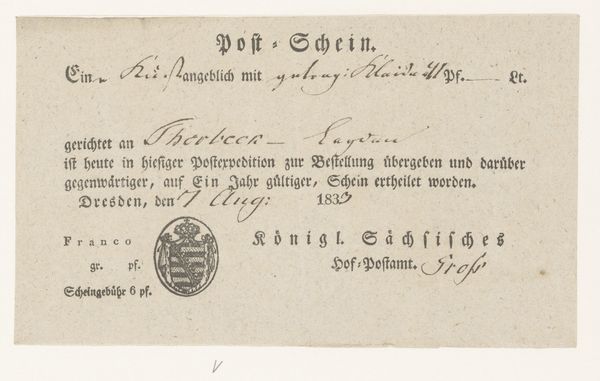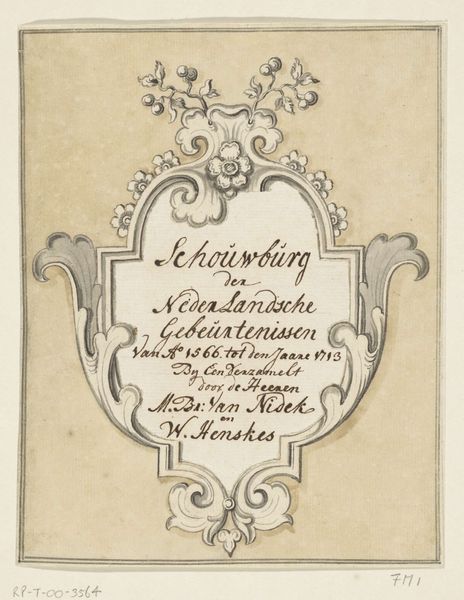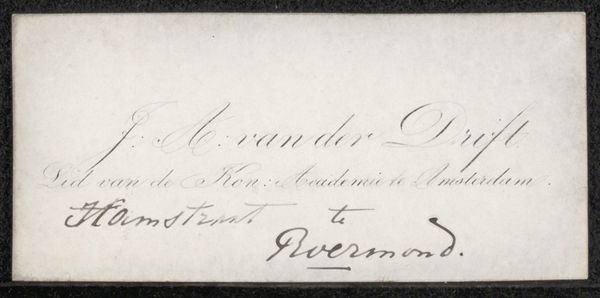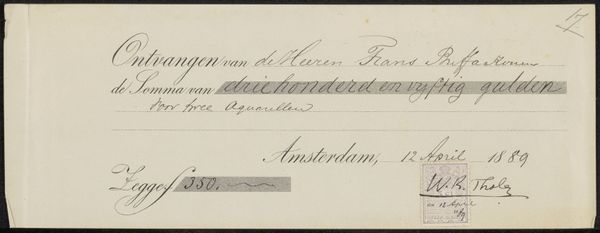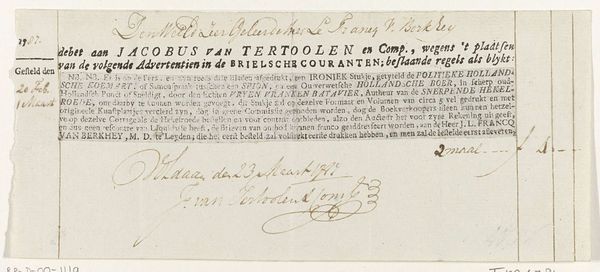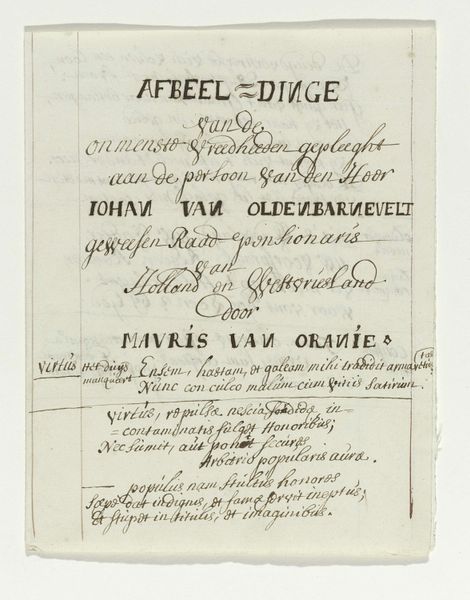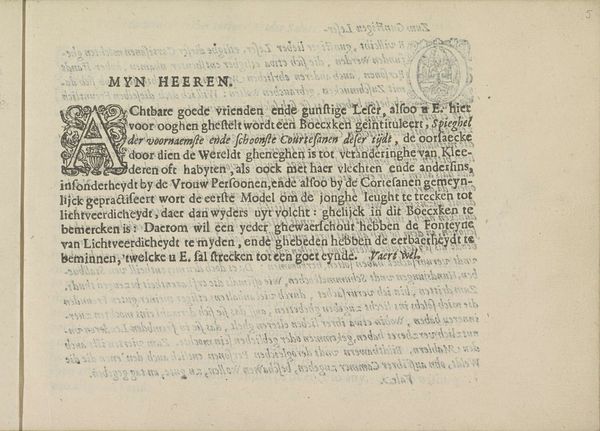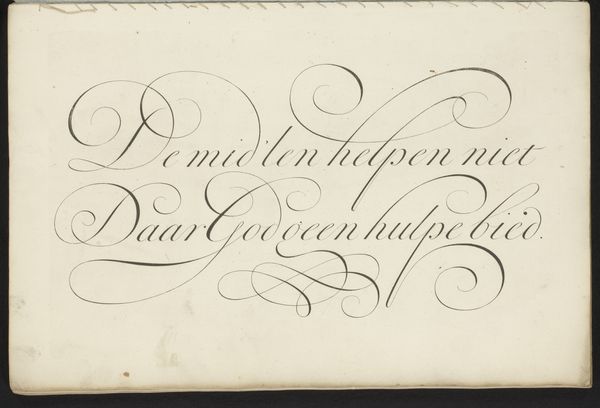
drawing, graphic-art, print, paper, typography, ink, engraving
#
drawing
#
graphic-art
#
hand written
#
hand-lettering
# print
#
incomplete sketchy
#
hand lettering
#
paper
#
typography
#
ink
#
romanticism
#
calligraphic
#
engraving
#
calligraphy
Dimensions: height 45 mm, width 210 mm
Copyright: Rijks Museum: Open Domain
Curator: My initial reaction is that of something ephemeral, like catching a half-remembered dream on paper. The piece whispers of fleeting moments, doesn't it? Editor: It does indeed. We're looking at "Tekst bij de prent van de tempel en tuin te Boekel," created anonymously in 1831. It combines drawing, graphic art, typography, ink, and engraving, all on paper. Currently residing at the Rijksmuseum. Curator: It’s almost like stumbling upon a hidden message, a relic unearthed from the collective past. All this detailed calligraphy speaks of ritual, but also a longing... Editor: Indeed. The text, primarily hand-lettered, details an arrangement created by the Schullerij of the city of Groningen. The second half talks of gratitude for a friendly reception, presented on June 27, 1831. Curator: Gratitude cast in ink! It's a potent brew. But there's more at play. A garden symbolizes paradise, while calligraphy immortalizes temporal meaning. Together, those components turn temporal gratification into spiritual food for generations to come. What's more romantic than an image reminding us that what lasts aren’t palaces or empires, but little tokens of human affection? Editor: The style evokes Romanticism, I would argue. It emphasizes emotion, the individual, and the past. Its appeal isn't based on perfection or accurate representation; its value comes from emotion and the evocation of human connection. It gives insight into societal mores during that time... A time of great social and political upheaval across Europe, of course. The need for harmony and simplicity was, I'd argue, as important then as it is today. Curator: Perfectly said. A lovely meditation on time, remembrance, and the art of making memories physical. Editor: Precisely, it prompts us to question our own acts of commemoration, doesn't it?
Comments
No comments
Be the first to comment and join the conversation on the ultimate creative platform.
